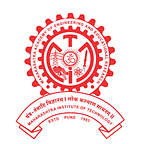Railway Engineering: A Beginner’s Perspective — Introduction
The need of transportation was felt since the start of primitive civilization and with the human beings began shifting goods and people from one place to another. However this cumbersome task was done either as a head loads or in carts drawn by men or animals. However the advancement of civilization and progress in modern science and technology added new elements in the transportation systems such as steam powered engines followed by diesel or petrol and then electric powered engines. These stepwise new additions in to railway systems revolutionized transportation sector, which not only enhanced ease with which shifting of goods is done but also the volume of goods to be transported at longer distances within shorter times. Hence this system found superior to any other transpiration systems available. A rail system has proved to be a real vehicle for civilizational transformation and assimilation. Needless to say that one must learn more about the rail systems and its components.
With the first introduction of steam locomotive by George Stephenson in 1814 which is used for traction in railways paved a way to new technological era in transportation sector. The first public railway was opened to traffic in 1825 in between Stockton and Darlington in the UK whereas the first railway line in India was opened in 1853 between Bombay and Thane (56 Kms). Eventually several other rail lines were opened shortly, such as 2nd train service commenced between Howrah and Hubli in 1854, 3rd train service and first in South India commenced between Vyasarpadi and Walajah Road. On the same day the section between Vyasarpadi and Royapuram by Madras Railway Company was also opened. With this humble beginning, Indian Railways has grown today into a giant network consisting of total route length network spread over 115,000 kms with 12,617 passenger trains and 7,421 freight trains each day from 7349 stations carrying 23 million travelers and 3 million tons of freight daily, making it the largest rail network in Asia and the world’s second largest network operated under a single management. Stretched to every corner of the country, Indian Railways serving fellow countrymen over 170 years by offering modest and inexpensive mode of transportation.
In spite of Railways being losing its market share to other modes of transportation in the past, the Indian Railways are expected to make a recovery by undertaking various new initiatives such as, the two dedicated freight corridors which will be operational soon, various new railway lines being opened for public, and witnessing steady growth in passenger and freight traffic. Indian Railways being one of the key contributors to the GDP of the country have shown revenue increase at a 5.48% during FY07-FY19 to US$ 27.13 billion in FY19. The passengers business had grew at a 5.58% during FY07-FY19 to US$ 7.30 billion in 2018–19. The Freight revenue hiked at a 5.84% during FY07-FY19 to reach US$18.30 billion in 2018–19. A phenomenal increase is seen in Foreign Direct Investment (FDI) into the Railways related components from April 2000 to March 2019 which comprise of US$ 926.28 million. India is among the top exporter in railways in the world witnessing the growth of 27.05% during 2010–2017 to US$ 303.29 million. With this healthy growth, India is aiming to account for 10% of global economy and a world leader in railway technology and transportation.
With this factual analysis of Indian railways and its contribution in our lives and in the growth of our economy, it is absolutely warranted to understand basics of railways and its functioning. Let us have organizational overview in the next part of this blog.
Want to know more about MIT College of Railway Engineering and Research Barshi, MH.
Apply now @ https://bit.ly/2K2tT00
#MITCORER #MITCORERBarshi #TransformIndia #MIT #BTech #RailwayEngineering #railways
